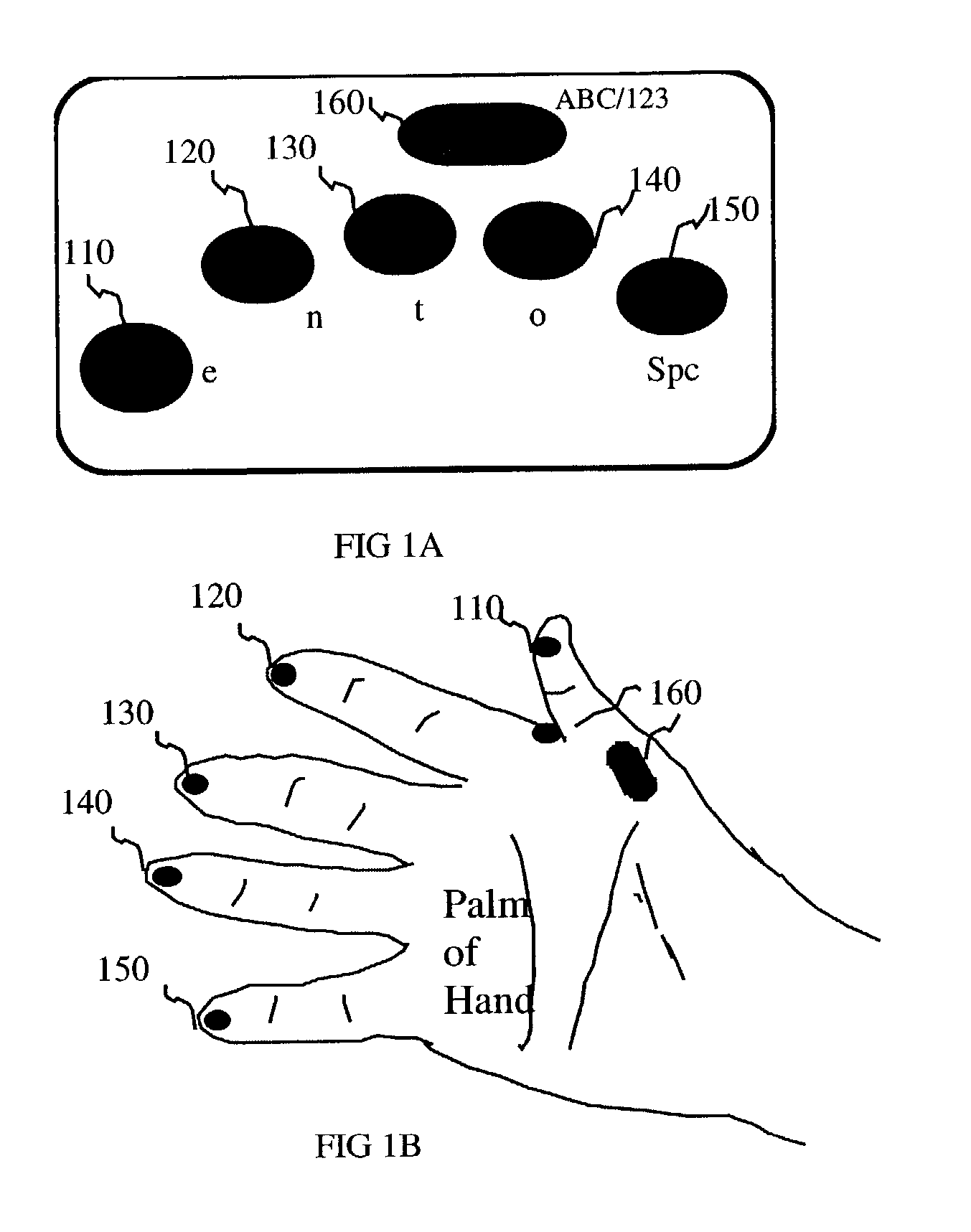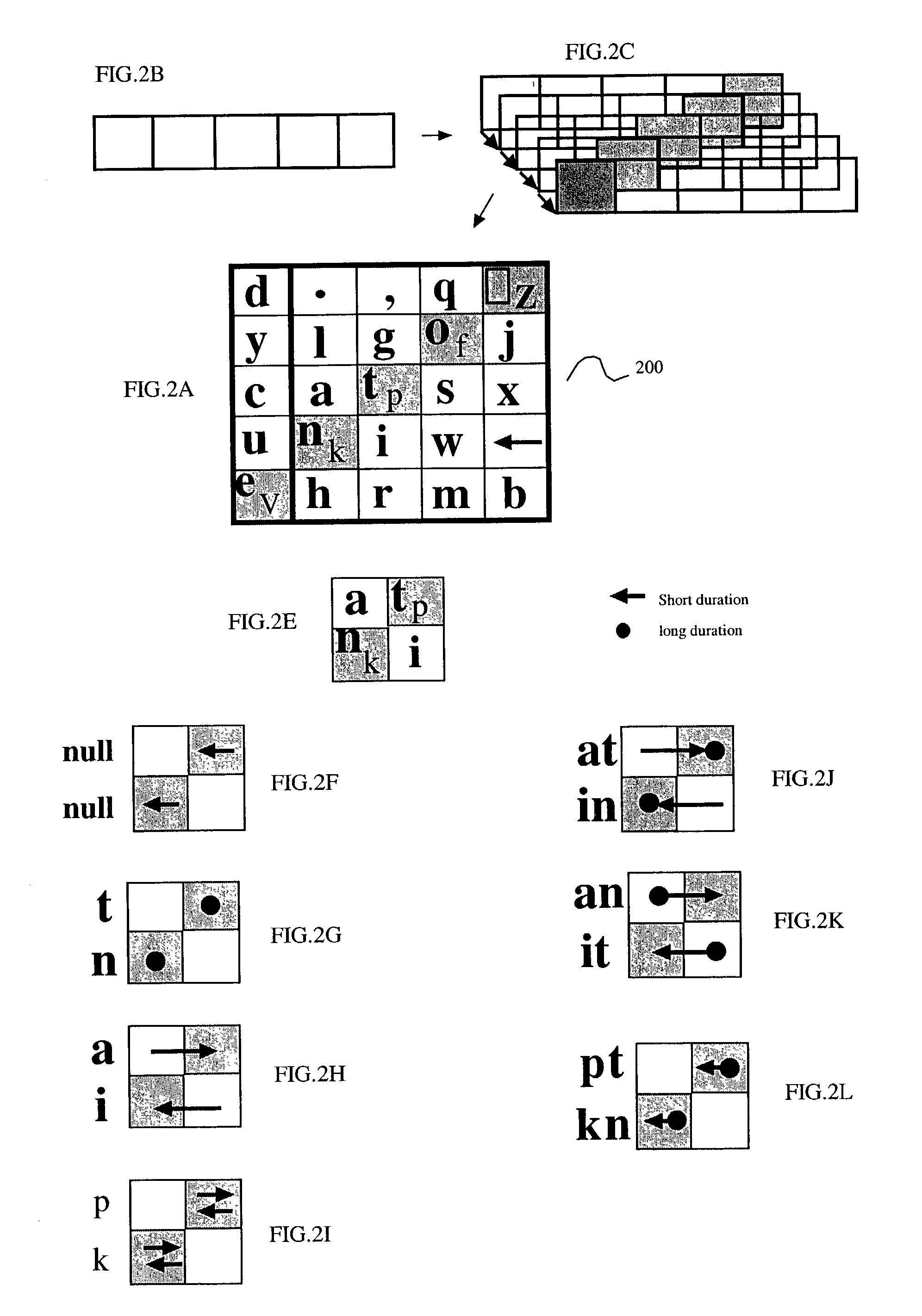System, method, and computer program product for single-handed data entry
a computer program and data entry technology, applied in the field of single-handed data entry system, method, computer program product, can solve the problems of not taking advantage of the capacity for coordinated overlapping movements naturally, the difficulty of learning the multiple pathways to a key and reproducing them by touch alone, and the difficulty of achieving the effect of quick typing ability
- Summary
- Abstract
- Description
- Claims
- Application Information
AI Technical Summary
Benefits of technology
Problems solved by technology
Method used
Image
Examples
example implementations
XIII. Example Implementations
[0223]A. Example Hardware / Software / Firmware Implementations
[0224]The present invention can be implemented in hardware, software, firmware, and / or combinations thereof, including, without limitation, gate arrays, programmable arrays (“PGAs”), fast PGAs (“FPGAs”), application-specific integrated circuits (“ASICs”), processors, microprocessors, micro controllers, and / or other embedded circuits, processes and / or digital signal processors, and discrete hardware logic. The present invention is preferably implemented with digital electronics but can also be implemented with analog electronics and / or combinations of digital and analog electronics.
[0225]B. Example Computer Program Implementations
[0226]The present invention can also be implemented in computer-readable code, or software, that executes on a computer system. FIG. 19 illustrates an example computer system 1900, in which the present invention can be implemented as computer-readable code. Various embodi...
PUM
 Login to View More
Login to View More Abstract
Description
Claims
Application Information
 Login to View More
Login to View More - R&D
- Intellectual Property
- Life Sciences
- Materials
- Tech Scout
- Unparalleled Data Quality
- Higher Quality Content
- 60% Fewer Hallucinations
Browse by: Latest US Patents, China's latest patents, Technical Efficacy Thesaurus, Application Domain, Technology Topic, Popular Technical Reports.
© 2025 PatSnap. All rights reserved.Legal|Privacy policy|Modern Slavery Act Transparency Statement|Sitemap|About US| Contact US: help@patsnap.com



